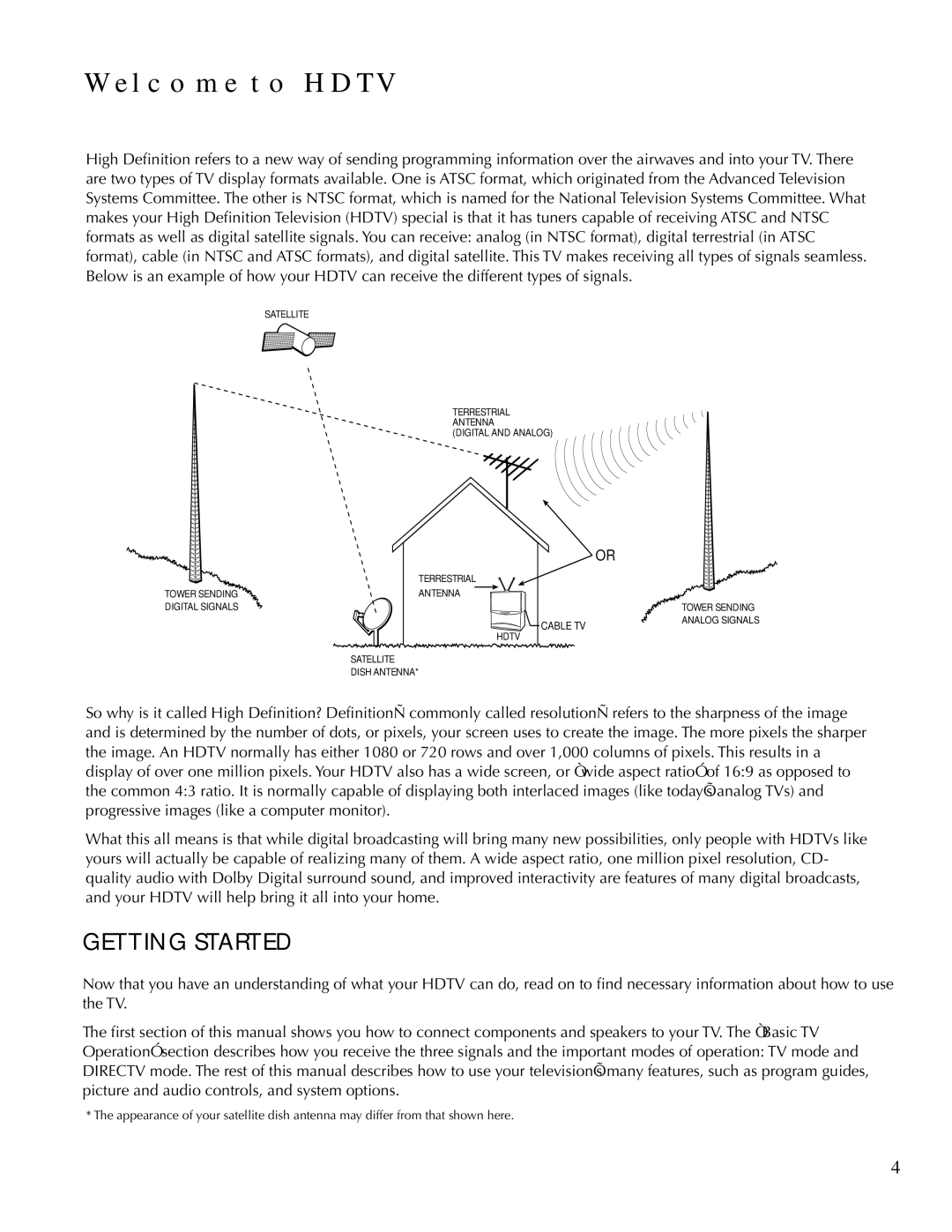
WELCOME TO HDTV
High Definition refers to a new way of sending programming information over the airwaves and into your TV. There are two types of TV display formats available. One is ATSC format, which originated from the Advanced Television Systems Committee. The other is NTSC format, which is named for the National Television Systems Committee. What makes your High Definition Television (HDTV) special is that it has tuners capable of receiving ATSC and NTSC formats as well as digital satellite signals. You can receive: analog (in NTSC format), digital terrestrial (in ATSC format), cable (in NTSC and ATSC formats), and digital satellite. This TV makes receiving all types of signals seamless. Below is an example of how your HDTV can receive the different types of signals.
SATELLITE
TERRESTRIAL ANTENNA
(DIGITAL AND ANALOG)
TERRESTRIAL
![]() OR
OR
TOWER SENDING | ANTENNA |
|
DIGITAL SIGNALS |
| TOWER SENDING |
| CABLE TV | ANALOG SIGNALS |
|
| |
| HDTV |
|
SATELLITE
DISH ANTENNA*
So why is it called High Definition?
What this all means is that while digital broadcasting will bring many new possibilities, only people with HDTVs like yours will actually be capable of realizing many of them. A wide aspect ratio, one million pixel resolution, CD- quality audio with Dolby Digital surround sound, and improved interactivity are features of many digital broadcasts, and your HDTV will help bring it all into your home.
GETTING STARTED
Now that you have an understanding of what your HDTV can do, read on to find necessary information about how to use the TV.
The first section of this manual shows you how to connect components and speakers to your TV. The “Basic TV Operation” section describes how you receive the three signals and the important modes of operation: TV mode and DIRECTV mode. The rest of this manual describes how to use your television’s many features, such as program guides, picture and audio controls, and system options.
* The appearance of your satellite dish antenna may differ from that shown here.
4
